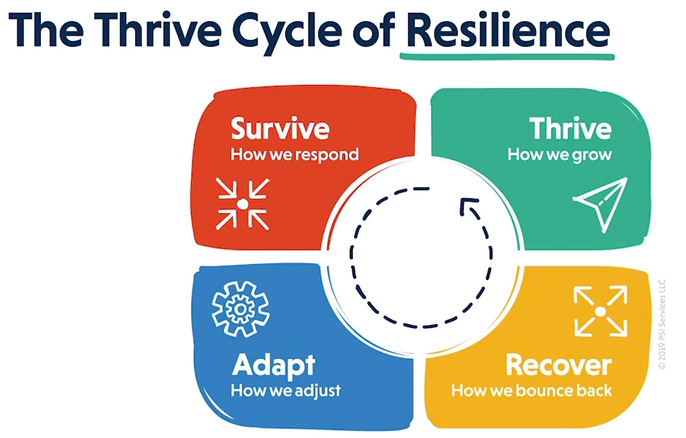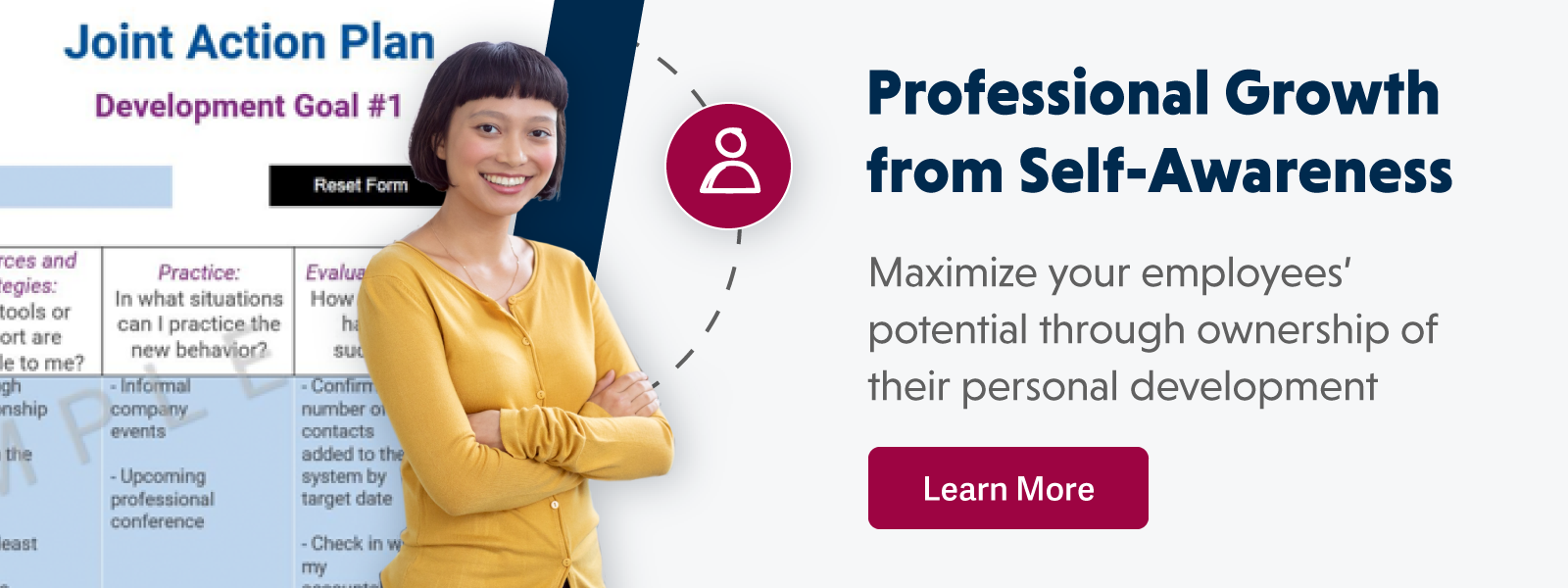In the first part of our two-part emotional intelligence series, we discussed how leaders could demonstrate emotional intelligence in their workplace actions. We dove deep into how feelings and attitudes affect workplace culture and performance and offered insights into how to support your teams’ emotional and mental well-being.
However, emotional intelligence in the workplace doesn’t stop there. In the final part of our series, we’ll take a closer look at how your organization’s values, teamwork, and communication affect your team’s overall success.
Identifying Your Values
What are values, and how do you identify them?
The values of your organization are like the roots of a tree. They are not always visible, but they need to be strong for your organization to succeed. An organization builds its foundation from the mindset, values, and beliefs of the team. How do values and beliefs differ? Beliefs represent the different assumptions each individual holds, while values exemplify the motivators and things that are most important to us. Essentially, values are part of our identity and drive the actions we do, anchoring us in unsteady times.

Identifying your values doesn’t have to be tricky. Using a pie chart like the one above, you can focus on your six key values. Fill in each slice of the chart with a word or phrase that means something to you. Ask yourself why this word or phrase holds importance in your life.
Every organization will face disruption and adversity. @CaliperCorp says it's how you recover and grow from the adversity that matters. Read more on part 2 of their #emotional #intelligence series: Click To TweetTake the time to identify your top six values and work to prioritize them. How often do you use this value in your daily life? Is it something you use sporadically or consistently? This exercise helps you balance and behave in-line with your values. When you take strides to behave in line with your values and beliefs, you’ll find increased self-esteem, self-regard, and emotional well-being and health.
This list of values can help you brainstorm what matters most to you:

Tip: 7 Strategies to use your values to keep you emotionally and mentally strong
- Notice what you are doing well
- Look for values you have that will help you connect with others.
- Connect with values that will help you stay hopeful, grounded, and strong – look for silver linings.
- Increase your focus on facts and statistics – have accurate information.
- Identify a great role model.
- ‘Borrow’ someone else’s values.
- Notice the values of others
Teamwork Is Everything
The old saying goes, “Teamwork makes the dream work.” With a strong emotional intelligence in the workplace comes heightened collaboration. Employees equipped with emotional intelligence skills are more capable of connecting on a common commitment and engaging those around them.
Work as a team to determine:
- Achievable outcomes — provide clarity on the mission, vision, and organizational goals, prioritize tasks and responsibilities, utilize personal talents, and ensure you remain realistic in your team efforts.
- Workplace relationship needs — determine if you are meeting frequently enough as a team, share thoughts and opinions on workplace processes, ask for feedback, and acknowledge ways your team can improve.
- Employee emotional needs — discuss whether you and your employees feel adequately supported in your functions, brainstorm opportunities to be proactive in your emotional needs, and converse about what can be learned from past challenges.

When your team members support one another and work toward a common goal, you become a powerful collective, fostering increased productivity.
Listen Up
You can base an individual’s ability to listen on two factors:
- Self Awareness — This is your ability to focus and pay attention to what the speaker is saying.
- Regard for Others — This is your attitude towards the person speaking.
Listening well is paramount to one’s ability to act quickly and adapt to challenges. In today’s frequently changing landscape, it has never been more critical for individuals to practice active listening so they can be educated and prepared for any potential disruptions.
Here are some simple steps you can take to practice your listening skills.
- Practice being present. Remove all distractions, both internal and external, from the area. Put your phone to the side, turn off all sounds, and closeout of any apps or tabs that may distract you.
- Try to understand what they are saying. Approach the conversation with a positive attitude and vested interest. Minimize your preconceptions so that you can be listening without judging them, and let them speak fully — don’t interrupt. An excellent way to ensure you understood the speaker is to rephrase and reflect on what you heard.
- Ask open-ended questions. Ask questions that probe deeper and allow the speaker to converse openly. Sample phrases and questions include:
- Tell me more…
- How is this affecting you?
- What impact does this have on you?
Tip: When having important conversations, include all relevant parties so that everyone can feel heard and represented.
There are three different forms of listening, each with unique behaviors:
- Listening to speak. This form of listening is the most passive form of the three. People are not invested in the speaker when practicing this method of listening. They often are listening selectively and spend time daydreaming and ignoring the speaker. These listeners are often quick to judge and are self-focused; they are merely waiting for their chance to speak.
- Active listening. Active listeners are interested in the conversation and are focused on the speaker. Each party is listening to one another and taking turns to talk, and both parties feel valued and understood. In these kinds of conversations, people explore details, and information is shared efficiently.
- Empathic listening. Empathic listeners fully and completely focus on the speaker. They approach conversations with complete openness and are non-judgmental. The speaker feels valued and comfortable, which fosters an environment where people can discuss feelings with honesty. Empathic listeners note both verbal and nonverbal language and can reflect on the conversation.
Listening is crucial in building trust in your workplace relationships. By providing an atmosphere where your employees feel valued and heard, you can strengthen your teamwork and culture.
Focus On Growth
Every organization will face disruption and adversity. It is how you cope with the adversity that makes all the difference. The “Thrive Cycle of Resilience” illustrates a 4-step process we progress through as crises arise. While every individual moves through the cycle at their own speed, this model helps us to visualize how behaviors might manifest in each stage.

Survive. When initially exposed to adversity or stress, people react in different ways. Anxiety and fear may cloud judgment, and people are often unable to think rationally and calmly. In this stage, it is not uncommon for our emotions to drive poor behaviors.
Adapt. What does adapting to adversity mean? In the adaptation stage, people make the conscious decision to adjust their surroundings and make necessary changes. This stage requires self-awareness, attention to detail, and a willingness to step out of the comfort zone. The adaptation stage fosters positive behaviors.
Recover. Recovering from challenging situations is just that — the ability to bounce back. When you enter the recovery stage, you have accepted your situation and are actively searching for solutions to your problems. A motivation to change your circumstances drives this stage, and it often reveals inner talents and strengths.
Thrive. The final stage of the cycle is all about growth. At this point in the process, you are focused on learning from the past and reflecting on how you can prepare for the future. When you reach the thriving stage, you have grown stronger and are a self-believer. This stage equips leaders with the resilience that is needed to cope with adversity better next time.
@CaliperCorp breaks down the 3 forms of listening in the final part of their #emotional #intelligence series. Read more: Click To TweetAs you advance through the cycle, take care not to get stuck in the adaptation mode. Adapting to adversity is not the same as recovering from adversity. To move on, we need to do the following four things:
- Take action. People draw their motivation from taking action, and recovery will not happen if you procrastinate.
- Set small objectives. To help motivate you towards action, set small objectives. Often, people look at their to-do list and feel overwhelmed. By working toward smaller and achievable goals, your objectives will feel less demanding.
- Create new routines and habits. Humans have an emotional side to our brains. It’s there to keep us safe and comfortable, which means it thrives on predictability. By reworking familiar routines to fit your new environment, you can help ease your mind and find ways to recover.
- Learn from past experiences. Recognizing your talents and strengths can motivate you to work toward recovery. Approach this reflection with a positive attitude — don’t take your past achievements for granted.
Once you’ve reached the end of the cycle, it is essential to give yourself the time and space to reflect on your journey. The pathway through the cycle builds up the resilience in your leaders to prepare them and equip them for future challenges. To assist you with your reflection, ask yourself the following questions:
- How did I initially respond to the crisis?
- How did I learn to adapt and cope with this adversity?
- What personal strengths and talents helped guide me through this situation?
- What did I learn from this experience?
- How did this experience make me stronger?
Emotional intelligence in the workplace equips us with the tools we need to better manage ourselves and our interpersonal relationships. When we practice emotional intelligence, we can regulate our emotions, think rationally, demonstrate empathy and respect, and foster positive behaviors.
In the final part of our series, we identified the importance of balancing our values with our actions and approaching conversations with a positive mindset and attitude. We discussed the various ways to listen to one another and the benefits of listening with empathy. Finally, we learned about the cycle of resiliency and the importance of focusing on growth. Emotional intelligence is something that can always be improved. By remaining open-minded and willing to adapt and grow, you can nurture deeper, more meaningful personal and professional relationships.
Caliper can assist you with your employees with your professional development goals. Our Individual Development Guide equips individuals with the tools and skills they need to advance their self-awareness and offers a guide on improving upon areas of opportunity. Caliper’s Essentials for Coaching works to help managers and HR Professionals coach and develop their employees. To learn more about how Caliper supports your organization in professional development, speak to one of our experts.


